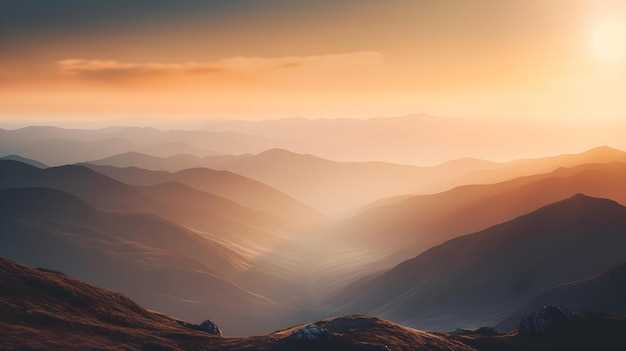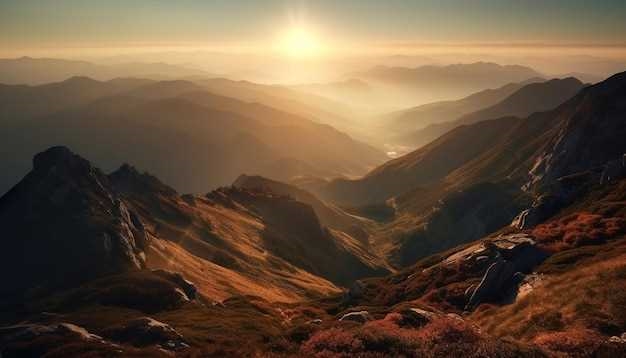Understanding the Phenomenon of Sunset Glow on Mountains
The magical interplay of light and nature during the twilight hours creates an exquisite spectacle that leaves a lasting impression. This natural wonder highlights the grandeur and beauty of towering summits bathed in warm, vibrant hues. The visual drama unfolds daily, offering a serene and breathtaking experience for those who observe it.
Throughout history, poets, artists, and photographers have been captivated by this mesmerizing display. The interplay of shadows and colors creates unique patterns and textures, transforming rugged terrain into a sea of gold and crimson. These moments serve as a reminder of the awe-inspiring power and tranquility of nature, inviting us to pause and reflect.
Exploring the science behind this captivating event reveals fascinating insights into how light and atmospheric conditions interact. The role of elevation, weather patterns, and the earth’s atmosphere all contribute to the varying intensity and shades witnessed during this daily occurrence. By delving into these elements, we can appreciate not just the visual delight but also the complex mechanisms that create it.
Sunset Glow: A Mountain’s Evening Beauty
The evening light, as it dips below the horizon, often paints majestic peaks in breathtaking hues. This natural spectacle is a feast for the eyes, blending colors that range from fiery reds to soft purples. As daylight declines, craggy summits transform into vibrant canvases, offering a fleeting but unforgettable visual experience.
The Science Behind the Evening Radiance
This mesmerizing display during twilight hours owes its magic to a few key factors. The angle at which sunlight strikes the earth, the composition of the atmosphere, and the varied terrain all contribute to the stunning array of colors. Particles in the air scatter shorter wavelengths, allowing longer wavelengths such as red and orange to dominate. This interaction creates a dazzling play of light and shade across rugged landscapes.
Popular Spots for Spectacular Evening Views
| Mountain Range | Ideal Viewing Time |
|---|---|
| Sierra Nevada | Autumn, around 6:30 PM |
| Swiss Alps | Summer, around 8:00 PM |
| Himalayas | Winter, around 5:00 PM |
| Rockies | Spring, around 7:00 PM |
Witnessing these magical transformations is an enriching experience. Whether you’re a photographer, a nature lover, or simply someone who enjoys scenic beauty, these moments of evening brilliance offer a profound connection to the natural world. Next time you find yourself in these mountainous regions, take a moment to appreciate this exquisite daily occurrence.
Scientific Explanations Behind the Color Changes

Many wonder about the radiant palette that appears during evening hours on peaks and ridges. This section delves into the scientific reasons that provoke these mesmerizing colors, exploring how various atmospheric conditions and light wavelengths interplay.
Light Scattering in Atmosphere

When the sun is low on the horizon, its light must traverse a larger thickness of the Earth’s atmosphere. Shorter wavelengths of light, like blue and violet, scatter more than longer wavelengths, making the sky appear yellow, orange, and red. This scattering influences the hues seen on elevated terrains, as the scattered light interacts with them uniquely compared to the flat plains.
Impact of Particulates and Dust

Aerosols, dust particles, and other airborne particulates play a pivotal role in altering light colors observed during evening hours. These particles are more abundant at lower angles of sunlight, enhancing the scattering effect and leading to more intense and vivid hues on peaks and cliffs.
| Factor | Effect on Color |
|---|---|
| Molecular Scattering | Enhances reds and oranges |
| Dust and Aerosols | Intensifies and deepens color shades |
| Sun’s Position | Changes wavelength path length, altering visibility of colors |
These factors together orchestrate the dynamic color shift observed on high-altitude landscapes during twilight, painting them with nature’s vibrant palette.
Enjoying the Phenomenon: Best Viewing Tips
Experiencing the breathtaking display of colors against the backdrop of towering peaks can be a magical moment. To make the most of your visit, careful planning and awareness are essential. Below are some valuable tips to enhance your observation experience and ensure an unforgettable adventure.
Choose the Right Location: Certain vantage points offer superior views. Research areas known for their panoramic landscapes and minimal obstruction. National parks, elevated trails, and secluded clearings often provide ideal sites.
Timing is Crucial: Arrive at your selected spot well in advance. This allows you to find a comfortable position and set up any equipment. The play of lights and hues can change rapidly, so being prepared ensures you won’t miss a moment.
Check Weather Conditions: Clear skies typically result in the most vibrant displays. Monitor weather forecasts and aim for days with minimal cloud cover. This increases the chance of observing the finest visuals.
Gear Up Properly: Dress appropriately for varying temperatures. Evenings on higher elevations can become chilly quickly. Bringing layers, a flashlight, and possibly a blanket can improve your comfort significantly.
Photography Tips: Using a tripod can stabilize your camera for sharper images. Experiment with different settings like long exposures and various filters. Capturing the essence of these moments can be rewarding and satisfying.
Remember, the environment can be delicate. Respect natural areas by leaving no trace and maintaining silence to fully immerse yourself. Cherish every moment and let the beauty of nature inspire you.

